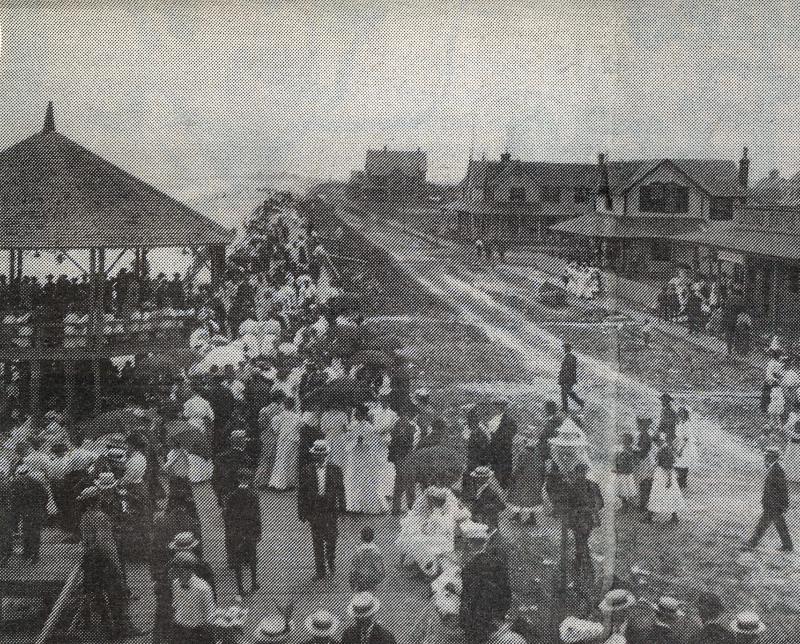Dick Catts' mini-parade says much about the beaches
Editor’s note: In honor of Publisher Emeritus Dennis Forney’s farewell column Jan. 7, the Cape Gazette is printing his very first Barefootin’. The piece focuses on the late beach concessionaire Dick Catts and was published in the inaugural edition of the Cape Gazette on Friday, May 28, 1993.
Dick Catts, riding in his old jeep that allows summer into the floorboards, headed into Rehoboth Beach last week leading a small, weekday parade.
Balanced strategically on the trailer behind, held in place by Catts's capable assistant, years of experience, and faith, was a blue- and yellow-striped metal beach shack. Behind the shack was a line of cars waiting for an opportunity to pass Catts's mini-parade, extending well into Rehoboth Ave. extended from the shoulder.
Beach boys and girls rent umbrellas and rafts to bathing suited customers during the summer. Their shacks are a focal point along the beaches which have attracted those seeking the refreshing saltwater, and relief from the heat, since the earliest Native Americans fled the heat and humidity of the interior of Delmarva centuries ago.
The beach, the rolling surf, and the cool air drawn from the sea as the summer sun heats the land - they draw the people.
Our beaches and bays drive the local economy. Access is the big factor. The greatest majority of the people can get onto the beaches and enjoy the sand and water. That universal access to such a wonderful recreational resource is unique and should be treasured and preserved.
According to Jim Hom, who has spent thousands of hours of his life researching and discussing Rehoboth Beach history, the resort boasted a boardwalk, to increase access to the beach and salt air, prior to 1889. His records show that a storm destroyed the existing boardwalk at that time. That first Rehoboth Beach boardwalk was built sometime after 1872 when the Rehoboth Association bought a tract along the beach and laid out streets and began planning the two hotels which would be built in 1873.
Carpenters dug pilings into the sand and then nailed boards lengthwise and crosswise.
They cussed the sand until they got the hang of it, joked about the first storms that would take their licks, and swapped tales about swatting mosquitoes the size of sparrows.
Men, business-like and proper in their dark suits, and women, sensible but fashionable in boarddusting white dresses, wasted little time in booking rooms at the hotels and climbing onto the boards to stroll and talk with, and about, one another.
Hom's Pier, built by Jim Hom's grandfather, Charles, extended into the sea from the Boardwalk and offered souvenirs, food, and entertainment for decades.
Horses pulled wagons and passengers along Surf Ave. which ran inside and parallel to that earliest boardwalk before the turn of the century.
Surf Ave. survived the first major storm to rock man's oceanside improvements, in 1889. The December storm of 1914 however proved too much for Surf Ave. After that storm took out the second boardwalk, officials decided to retreat and built their third effort where today's boardwalk exists.
At the north end of the boardwalk, Surf Ave. continues today out toward North Shores and the marshes and dune pines of Cape Henlopen.
Over the years, boardwalk construction and coastal engineering knowledge have increased dramatically.
Stone structures called groins, built out from the beach, capture sand migrating northward from Bethany to help nourish the beaches and buffer the boardwalk from most storms. And millions of dollars are spent, and planned to be spent, pumping sand on the beaches following storms to protect the mega-resource the beaches represent.
Dick Catts, and thousands of others whose livelihoods depend on clean, wide beaches and the additional access provided by the boardwalk, are thankful to be able to lead mini-parades late each spring.






















































